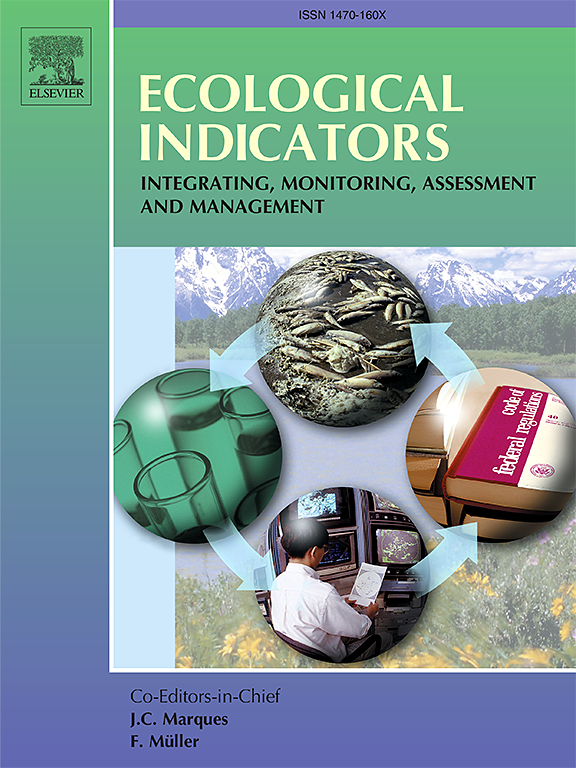Evaluation mechanism of urban green competitiveness via a gray fuzzy comprehensive evaluation model
IF 7
2区 环境科学与生态学
Q1 ENVIRONMENTAL SCIENCES
引用次数: 0
Abstract
Green development is a mode of economic growth and social development aimed at efficiency, harmony and sustainability. Green competitiveness has gradually become a key factor in measuring the comprehensive competitiveness of a country or region. However, existing studies lack a unified evaluation index system and comprehensive methodology for assessing urban green competitiveness. This study fills this gap by integrating gray correlation analysis and fuzzy comprehensive evaluation to provide a more accurate and systematic assessment. First, 40 green competitiveness indicators were selected from four aspects of economic level, environmental pressure, resource consumption and social policy, and a green competitiveness evaluation index system was constructed. Second, the weight of each evaluation index was subsequently determined via the entropy weight method. Third, the gray correlation analysis and the fuzzy comprehensive evaluation method are combined to establish a gray fuzzy comprehensive evaluation model for evaluating urban green competitiveness. Finally, 11 provinces and cities along the Yangtze River Economic Zone in China were used as research objects, and the established evaluation mechanism was applied for empirical analysis. According to the comprehensive scores and ranking results of provinces and cities, some corresponding countermeasures and suggestions are provided to promote the competitiveness of the Yangtze River Economic Zone in terms of the economy, environment, resources, society and so on.
基于灰色模糊综合评价模型的城市绿色竞争力评价机制研究
绿色发展是一种以高效、和谐、可持续为目标的经济增长和社会发展方式。绿色竞争力逐渐成为衡量一个国家或地区综合竞争力的关键因素。然而,现有研究缺乏统一的评价指标体系和综合的城市绿色竞争力评价方法。本研究将灰色关联分析与模糊综合评价相结合,填补了这一空白,提供了更准确、更系统的评价。首先,从经济水平、环境压力、资源消耗和社会政策四个方面选取40个绿色竞争力指标,构建绿色竞争力评价指标体系。其次,通过熵权法确定各评价指标的权重;第三,将灰色关联分析法与模糊综合评价法相结合,建立了城市绿色竞争力的灰色模糊综合评价模型。最后,以中国长江经济带沿线11个省市为研究对象,运用建立的评价机制进行实证分析。根据各省市综合得分和排名结果,从经济、环境、资源、社会等方面提出相应的提升长江经济区竞争力的对策建议。
本文章由计算机程序翻译,如有差异,请以英文原文为准。
求助全文
约1分钟内获得全文
求助全文
来源期刊

Ecological Indicators
环境科学-环境科学
CiteScore
11.80
自引率
8.70%
发文量
1163
审稿时长
78 days
期刊介绍:
The ultimate aim of Ecological Indicators is to integrate the monitoring and assessment of ecological and environmental indicators with management practices. The journal provides a forum for the discussion of the applied scientific development and review of traditional indicator approaches as well as for theoretical, modelling and quantitative applications such as index development. Research into the following areas will be published.
• All aspects of ecological and environmental indicators and indices.
• New indicators, and new approaches and methods for indicator development, testing and use.
• Development and modelling of indices, e.g. application of indicator suites across multiple scales and resources.
• Analysis and research of resource, system- and scale-specific indicators.
• Methods for integration of social and other valuation metrics for the production of scientifically rigorous and politically-relevant assessments using indicator-based monitoring and assessment programs.
• How research indicators can be transformed into direct application for management purposes.
• Broader assessment objectives and methods, e.g. biodiversity, biological integrity, and sustainability, through the use of indicators.
• Resource-specific indicators such as landscape, agroecosystems, forests, wetlands, etc.
 求助内容:
求助内容: 应助结果提醒方式:
应助结果提醒方式:


